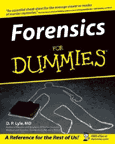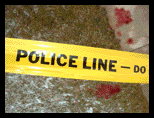Reviews:
Reporter World provides a variety of safety equipment, identification products, specialized high-visibility clothing, pertinent news, product reviews, book reviews and useful links specifically for reporters, writers, assignment editors, news correspondents, journalists, ENG crews, photographers, production staff, directors, segment producers, media security personnel, and freelancers: in short, anyone who is part of the news gathering, information reporting, or documentary film industries.
In this section we review various products and services of relevance to reporters, writers, correspondents, ENG teams and production staff. These products include cameras and accessories; computer hardware and software; scanners; printers; books and other products. Smaller, mini-reviews, are also available in other sections of this site including Products, Books and Movies.
We are constantly adding additional reviews to this section. If you have any suggestions for other products you would like us to review, simply e-mail us using the feedback address on our Terms of Service page. Please supply us with as much information as you can about the product (including name, manufacturer, model number) or book (including title, author, ISBN and publisher).
 Title: Forensics For Dummies Title: Forensics For Dummies
Author: Dr. D. P. Lyle
Copyright: © 2004
Publisher: For Dummies, an imprint of Wiley
ISBN: 0-7645-5580-4
Relevance: Forensics for Dummies serves as a great introduction to the field of forensics, crime scene investigation and to a lesser degree, chemistry -- and is ideal for reporters covering the crime beat, city news or historical stories involving questionable identity.
Review: This plain-English guide introduces readers to key facts and technologies behind forensic investigations, and in the process, reveals how crime scenes work to identify the victim, criminal and circumstances around which death and other mayhem may have occurred.
Understanding the World of Forensics takes us behind the scenes and introduces key players such as the evidence collection unit, photography unit, and the evidence storage specialists. We take a quick look at the historic foundations of forensics including the Locard Exchange Principle (named after Dr. Edmond Locard, the French police officer who first observed the principle). The Locard Exchange Principle is the basis of all modern forensic investigation and is based on the transference of materials such as hairs, fibers, and other material when any two individuals meet.
Next up are basic job descriptions of criminalists, forensic identification specialists and medical examiners. Because this book starts from the basics and moves forward, it is ideal for reporters and others who have no science or scientific background. It explains key principles clearly and nicely and uses true-crime examples to illustrate these principles.
An entire chapter is dedicated to fingerprints including examples of arches, loops and whorls, latent prints and using chemistry, specifically, certain chemicals used by the pros to release otherwise hidden fingerprints.
Author Lyle also discusses blood stains, including the characteristics of blood, recognizing and analyzing bloodstain patterns, and how to interpret projected blood splatters. Although the book presents technical information clearly, it does not use color pictures or anything particularly gruesome to illustrate its underlying themes. On the good side, the book is rather PG; on the downside, few murders are "clean" and reporters covering these beats had better get used to the guts and gore.
Two good chapters for reporters who must understand how police interpret criminal activity are the chapters describing how shoes, tires and tools make impressions and how arson is perpetrated, investigated, and the arsonists incarcerated.
Determining the hows and whys of death necessitates learning about forensic autopsies. Forensics for Dummies describes who gets autopsied (perhaps surprisingly, not everyone who dies), what happens during an autopsy and how official autopsy reports are filed. Also good for investigative journalists are detailed descriptions of how forensic pathologists, police and other investigators go about identifying so-called John and Jane Does, a generic description of people with no immediate identity. Techniques that are used to estimate time of death, traumatic injuries and asphyxia, round out the in-depth body examination phase of forensic investigation.
Putting on our science caps, serology (working with blood and other bodily fluids), DNA (including nuclear and Mitochondrial types), toxicology, and ballistics all provide useful background material for reporters and anyone seriously thinking about embarking on a crime writing career. In fact, one of the chapters deals with questions surrounding the validity of documents that the folks over at CBS could have used recently to avoid the recent scandal in its News division.
Although the descriptions of the top ten ranked forensic careers probably won't tempt seasoned reporters or other investigative journalists from their PowerBooks and ThinkPads, readers from other demographs might find these fascinating.
What is interesting and directly transferable to our profession is the chapter in which Dr. Lyle describes ten ways Hollywood gets it wrong, including the quick death, the pretty death, the bleeding corpse, the exact time of death, the one-punch knockout, the disappearing black-eye, the fast-acting poison, the untraceable poison, the instant athlete, and the high tech lab. Fascinated reading for those who need to present their stories both factually and accurately.
Overall:
Forensics for Dummies is highly recommended for any reporter, investigative journalist or historian wishing to delve deeper behind the story and to get a thorough understanding of what police, DAs and crown attorneys are all talking about. The book is perfect for those starting off on the crime or city beats and provides some serious background and reality checks concerning the fascinating world of forensic science. Highly recommended.
End of Review
Have your say.
You can give us your feedback by visiting our Terms of Service page.
Buy this book.
If you wish to buy this book right now, please click here.
Read other reviews.
If you wish to return to the main Reviews page, please click here.
|
|
|





